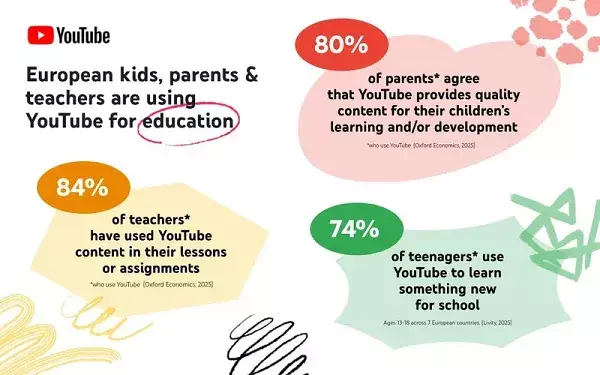In an era where digital technology has become intertwined with daily life, platforms like YouTube are increasingly recognized not just as entertainment hubs but as vital educational tools. What once was primarily a space for videos designed to entertain or distract has evolved into an invaluable resource for learners worldwide. Yet, this shift brings with it a complex challenge: how can such platforms be harnessed for education without falling prey to regulatory restrictions? A critical look at YouTube’s recent emphasis on educational content reveals a powerful opportunity for the platform to redefine its identity and influence the future of digital learning.
The data highlights that a significant majority of young users actively turn to YouTube to expand their knowledge base—whether for academic purposes or personal curiosity. Over 70% of teenagers surveyed report using the platform to learn “something new,” indicating that YouTube’s educational content resonates strongly with the digital generation. This points toward a future where structured, high-quality educational videos could become central to school curricula and extracurricular learning. Yet, YouTube’s efforts to position itself as more than just a video-sharing site must confront existing perceptions and regulatory hurdles, especially as policymakers seek to limit minors’ exposure to social media.
Understanding the Broader Implications for Education and Regulation
The rising recognition of YouTube’s educational potential isn’t happening in a vacuum; it coincides with escalating concerns over youth exposure to social media risks. Governments across Europe, Australia, and other regions are deliberating new restrictions, often proposing that children under a certain age be shielded from platforms that are predominately entertainment-driven. Such restrictions risk undermining the educational benefits these platforms provide, potentially hampering the ability of young learners to access valuable learning resources at their fingertips.
YouTube’s response to this situation underscores a strategic pivot—highlighting its educational offerings as a shield against regulation. The platform champions its use by teachers and parents alike, citing studies that show high engagement and trust in YouTube’s educational content. The fact that many educators already incorporate YouTube videos into their lessons suggests a deep-rooted role that extends beyond mere leisure. However, the broader regulatory landscape remains wary, framing platforms like YouTube as potential sources of distraction or misinformation rather than learning aids. This dichotomy underscores the intrinsic tension between facilitating educational access and safeguarding youth from potential harms.
Can YouTube Shape a New Paradigm for Digital Education?
The pivotal question is whether YouTube can effectively position itself as an educational ally in the face of mounting restrictions. Its strategy revolves around emphasizing the platform’s capacity to nurture curiosity, provide academic support, and complement traditional learning methods. By showcasing real-world examples of teachers integrating YouTube content into classrooms and parents trusting it as a learning aid, the platform aims to legitimize its educational value.
But it’s not merely about validation; it’s about transforming perceptions. The challenge lies in convincing regulators, parents, and educators that YouTube is not just a haven for entertainment but a catalyst for immersive, accessible learning. If the platform can develop its infrastructure to prioritize quality educational content, promote digital literacy, and implement robust safety measures, it could potentially carve out a niche that balances learning with protection.
Yet, one must be critical of the optimism. The internet’s open nature means that harmful content and misinformation are ever-present threats, and no platform is immune. While YouTube’s educational initiatives are promising, they require ongoing vigilance and innovation. The platform’s success depends on its ability both to elevate credible educational content and to regulate against misleading material, all while navigating a landscape of restrictive policies aimed at protecting vulnerable users.
Imagining a Future Where Education and Technology Converge
Ultimately, the real power of YouTube lies in its vast reach and versatility. If wielded responsibly, it can serve as a democratic tool that democratizes learning, breaking down barriers of geography, socio-economic status, and accessibility. The future of digital education hinges on platforms recognizing this potential and investing in sustainable, high-quality content creation, digital literacy, and safety.
As policymakers continue to debate and implement restrictions, platforms like YouTube have an opportunity—and a responsibility—to demonstrate that their value far exceeds entertainment. They can become pillars of digital literacy, lifelong learning, and innovation in education. Whether YouTube can transcend its current challenges and redefine the educational landscape remains to be seen; what is clear, however, is that its influence is undeniable, and its potential immense. This is a moment for platforms to innovate boldly, placing the learning needs of the next generation at the forefront of their mission.

